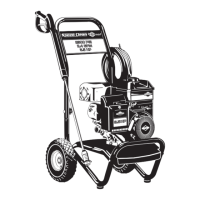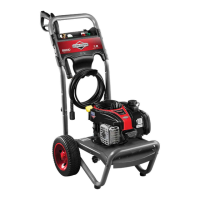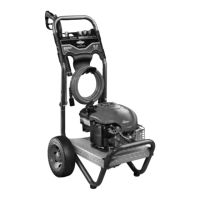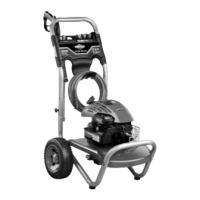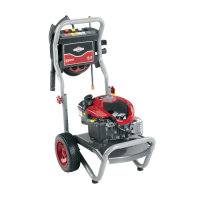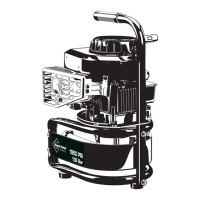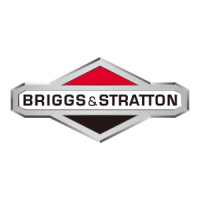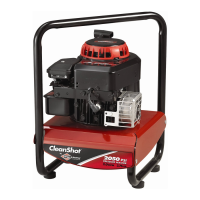Add Engine Oil
1. Place pressure washer on a at, level surface.
2. Clean area around oil ll and remove yellow oil ll
cap/dipstick.
3. Hold neck of supplied oil pouch and remove cap.
4. Slowly pour contents of oil pouches into oil ll
opening. Checking oil level frequently, ll to FULL
mark (A) on dipstick.
NOTICE Pause to permit oil to settle. Wipe dipstick
clean each time oil level is checked. DO NOT overll.
NOTICE Improper treatment of pressure washer
could damage it and shorten its life.
• DO NOT attempt to crank or start the engine before it has
been properly serviced with the recommended oil. This
could result in an engine failure.
5. Replace oil ll cap/dipstick and fully tighten.
Add Fuel
Fuel must meet these requirements:
• Clean, fresh, unleaded gasoline.
• A minimum of 87 octane/87 AKI (91 RON). For
high altitude use, see High Altitude.
• Gasoline with up to 10% ethanol (gasohol) is
acceptable.
NOTICE Use of unapproved fuels could damage
generator and voids warranty.
• DO NOT use unapproved gasoline such as E15 and E85.
• DO NOT mix oil in gasoline or modify engine to run on
alternate fuels.
To protect the fuel system from gum formation, mix
in a fuel stabilizer when adding fuel. See Storage.
All fuel is not the same. If you experience starting or
performance problems after using fuel, switch to a
dierent fuel provider or change brands. This engine is
certied to operate on gasoline. The emission control
system for this engine is EM (Engine Modications).
1. Clean area around
fuel ll cap, remove cap.
2. Slowly add regular unleaded fuel (B) to fuel
tank
(C). Be careful not to overll. Allow about 1.5”
(4 cm) (D) of tank space for fuel expansion.
3. Install fuel cap and let any spilled fuel evaporate
before starting engine.
High Altitude
At altitudes over 5,000 ft. (1,524 m), a minimum
85 octane / 85 AKI (89 RON) gasoline is acceptable.
To remain emissions compliant, high altitude
adjustment is required. Operation without this
adjustment will cause decreased performance,
increased fuel consumption, and increased emissions.
See an Authorized Briggs & Stratton dealer for high
altitude adjustment information. Operation of the
engine at altitudes below 2,500 ft. (762 m) with the
high altitude kit is not recommended.
D
C
B
A
WARNING Fuel and its vapors are extremely
ammable and explosive which
could cause burns, re or explosion
resulting in death or serious injury.
WHEN ADDING FUEL
• Turn pressure washer engine OFF and let it cool at least
2 minutes before removing fuel cap. Loosen cap slowly to
relieve pressure in tank.
• Fill fuel tank outdoors.
• DO NOT overll tank. Allow space for fuel expansion.
• If fuel spills, wait until it evaporates before starting engine.
•
Keep fuel away from sparks, open ames, pilot lights,
heat, and other ignition sources.
• Check fuel lines, tank, cap and ttings frequently for
cracks or leaks. Replace if necessary.
•
DO NOT light a
cigarette or smoke.
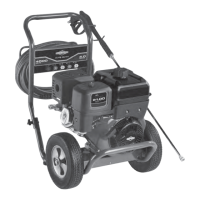
